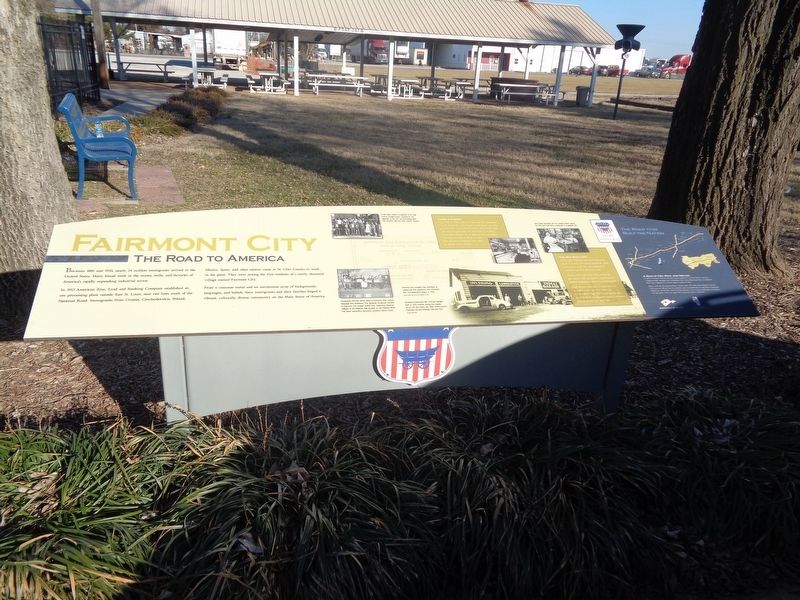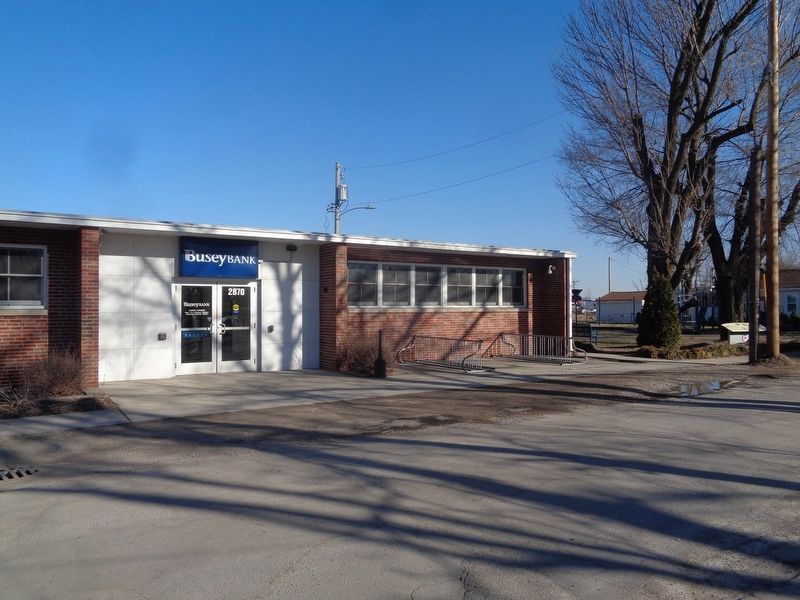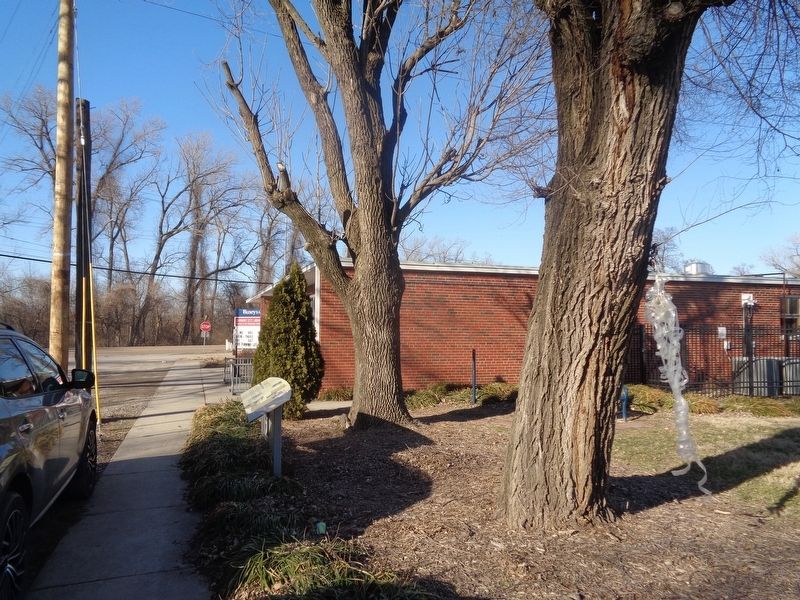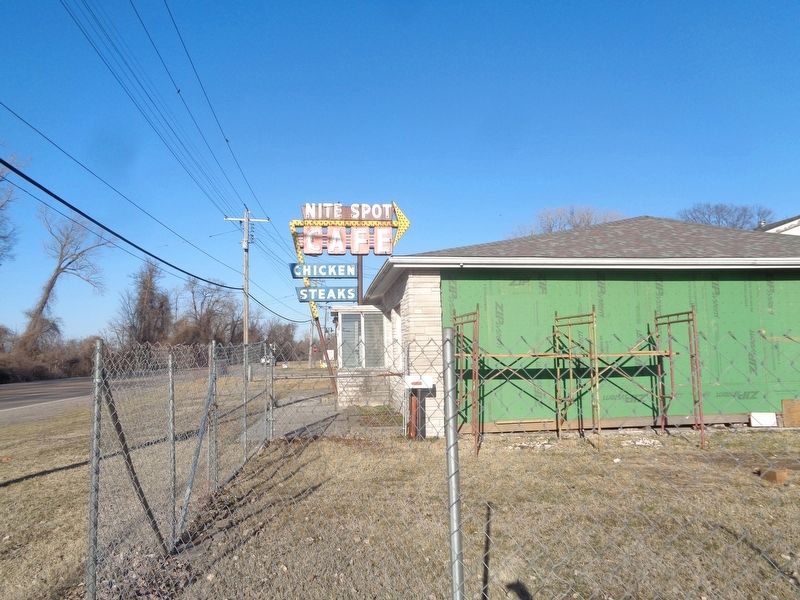Fairmont City in St. Clair County, Illinois — The American Midwest (Great Lakes)
Fairmont City
The Road to America
In 1913 American Zinc, Lead and Smelting Company established an ore processing plant outside East St. Louis, near rail lines south of the National Road. Immigrants from Croatia, Czechoslovakia, Poland, Mexico, Spain, and other nations came to St. Clair County to work in the plant. They were among the first residents of a newly chartered village named Fairmont City.
From a common metal and an uncommon array of backgrounds, languages, and beliefs, these immigrants and their families forged a vibrant, culturally diverse community on the Main Street of America.
Carril's Market
From 1925 to 1978, residents of Fairmont City frequented Carril's Market for meats, breads, canned goods and other groceries. John Carril and his sister Neadie were the first generation of Carrils born in America. Their father, Manual Carril, followed the zinc industry from Spain to Cherryvale, Kan., and later relocated to Fairmont City, where he opened Carril's Market.
The Nite Spot Café
In the early 1950s, the Nite Spot Café served meals to tourists and truckers around the clock, seven days a week. The café employed 14 waitresses and three full-time cooks.
Owners Adam and Anne Galas stocked the gift counter with toys, jewelry, figurines, and sundries ranging from shoe laces to shaving kits.
Truck drivers could order a Lionel Train set on display at the café, then collect the toy on a return trip. The service assured gifts for children of time-pressed truckers and repeat business for the Nite Spot Café.
A Road of Dirt, Rock, And Dreams
In 1806, President Thomas Jefferson signed legislation to provide federal funding for a National Road. Surveyed from Cumberland, Md., to the Mississippi River, the National Road was a highway for pioneers eager to settle the West.
Today, as US 40, the National Road in Illinois spans 164 miles. From Indiana to East St. Louis, you can still see how the ambitions and accomplishments of early Illinois immigrants shaped our communities. You'll find their influence in our art and architecture, our industry and agriculture, and in our way of life. Enjoy your time on the Road.
(photo captions:)
·Immigrants formed social clubs to preserve their culture, language and traditions. The Mexican American Society of Fairmont City hosted fiestas and celebrated Mexican holidays at the Mexican Hall, located on the National Road. The band Honorifica provided dance music.
·In
the early 1900s, immigrants to St. Clair County brought brawn, experience, and ingenuity to the zinc ore processing plant that became Fairmont City's anchor industry.
·Fairmont City resident Dan Clotfelter, Jr., cashed his first paycheck from American Zinc at Kokotovich's Tavern in 1941.
·Roadside businesses like Thomas Garage, built in 1931, thrived during the heyday of US 40 and Route 66. Both cross-country highways passed through Fairmont City.
·Anne Galas and her husband Adam named the Nite Spot Café after a restaurant in a gangster film.
Erected by National Road Association of Illinois.
Topics and series. This historical marker is listed in these topic lists: Hispanic Americans • Industry & Commerce • Roads & Vehicles. In addition, it is included in the The Historic National Road series list.
Location. 38° 39.019′ N, 90° 6.244′ W. Marker is in Fairmont City, Illinois, in St. Clair County. Marker is on North 44th Street south of Collinsville Road, on the right when traveling north. Marker is outside the Fairmont City Library Center. Touch for map. Marker is at or near this postal address: 2870 N 44th St, East Saint Louis IL 62201, United States of America. Touch for directions.
Other nearby markers. At least 8 other markers are within 3 miles of this marker, measured as the crow flies. The Fairmont City Library Center (within shouting distance of this marker); N. 13th St. and Nectar Ave. (approx. 1.7 miles away); Woodhenge (approx. 1.7 miles away); N. 9th St. and Gross Ave. (approx. 1.8 miles away); War Memorial (approx. 2 miles away); Civil War Memorial (approx. 2 miles away); West Stockade (approx. 2.1 miles away); Mound 72 (approx. 2.2 miles away). Touch for a list and map of all markers in Fairmont City.
More about this marker. This is the first of several informational kiosks that were placed by the National Road Association of Illinois during the mid-2010s, when starting from the West. They are found in most of the cities and small towns located on the former National Road.
Credits. This page was last revised on March 3, 2021. It was originally submitted on March 3, 2021, by Jason Voigt of Glen Carbon, Illinois. This page has been viewed 450 times since then and 52 times this year. Photos: 1, 2, 3, 4. submitted on March 3, 2021, by Jason Voigt of Glen Carbon, Illinois.



